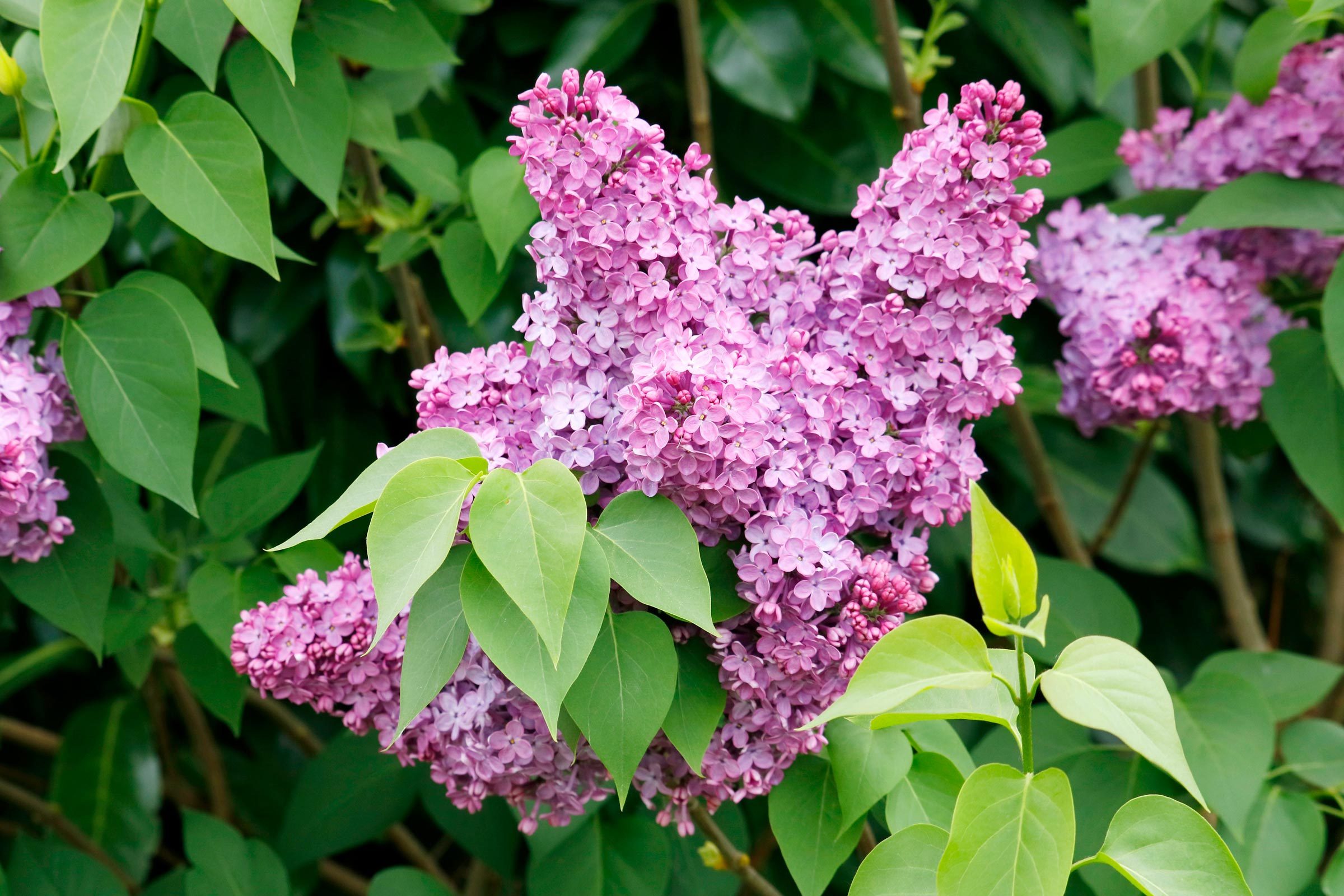Lilacs are a beautiful, sweet-smelling sign of spring, whether in shrub or tree form. What differences between the two do you need to know about?

Lilac Trees vs. Lilac Bushes: What’s the Difference?

My front garden features a tree that blooms in early June and makes people stop and ask me what it is. They’re stumped because it’s unusual for a tree to bloom so late in the spring. And although the flowers are white, they look and smell like lilacs.
That’s because it’s a Japanese Tree Lilac, Syringa reticulata, one of several types of lilacs I grow in my garden. Read on to learn more about it, and the other forms lilacs take.
On This Page
Are Lilacs Trees or Bushes?
Lilacs can grow as bushes or trees. Most lilacs sold today are bushes, so you’d be forgiven for being confused by the sight of one in tree form.
While there are hundreds of varieties of lilac bushes, there is just one lilac tree, Syringa reticulata. In the past, you didn’t often see them. Now more and more landscapers and homeowners are seeking them out, in part because they stay somewhat small, for a tree.
Difference Between Lilac Bush and Tree
The difference comes down to the amount and placement of stems.
Lilac bushes (AKA shrubs) are defined in the typical manner, with multiple woody stems coming up from the base of the plant. In contrast, most lilac trees have one single woody stem: the trunk. But your local garden center may also offer shrub lilacs grafted onto a single stem, called a standard, so they resemble small trees.
Choosing between a lilac tree and a lilac bush is typically based on available space. Lilac bushes vary in size and can fit into smaller spots within a garden. A lilac tree needs a place to grow up to 20 ft. tall and 15 ft. wide. Both need sunlight to flower well. Find out why is your lilac bush not blooming.
Pruning Lilacs Bushes vs. Trees
For the most part, caring for lilacs is the same whether you’ve got a shrub or a tree. One exception: Pruning.
For lilac bushes, prune every year to remove old flowers, a few weeks after flowering. You can also trim back lilac bushes to maintain them at a specific height if desired. Do this shortly after they’ve flowered as well.
For lilac trees: When it is young and small, cut off seed heads a few weeks after flowering. After a few years, as the tree grows larger, you no longer need to prune it.
If you happen to have a shrub lilac that’s been grafted onto a single stem so it looks like a small tree, prune it after flowering annually so it keeps its shape. Cut off any suckers that come up from the base of the stem as soon as you see them.
Whether if you have a lilac tree or bush, always prune within a few weeks after flowering. Flower buds for the next year are formed in the summer and early fall. If you wait too long to prune, you’ll cut off the flower buds for the next spring.
Five Lilac Trees and Shrubs To Try
There are hundreds of varieties of lilac trees and bushes, and a gardener with enough room could easily become a collector. For the rest of us, as long as we live in USDA Hardiness Zones 3 through 7, planting varieties that bloom at different times helps ensure we have lilacs to enjoy for several weeks each spring.
A couple of things to note: All lilacs prefer a sunny location in well-drained soil. If planted in the shade, they won’t bloom reliably in the spring.
Also, lilacs are best planted in the fall or early spring while still dormant, though we understand it’s hard to resist buying them while in bloom at the local garden center. If you do, plant as soon as possible, cut back the blooms and water well during the growing season.
A selection of beauties to start — or add to — your collection:
A true lilac tree
Hardy in USDA Hardiness Zones 3 through 7, Japanese Tree Lilac, Syringa reticulata, is the one true lilac tree. It’s a small, slow-growing tree that may reach 20 to 25 feet at maturity. The strongly scented, ivory-colored blooms open in late May to early June and attract many pollinators.
Lollipop-shaped grafted lilac tree
If you prefer traditional purple lilac flowers but want a tree form, consider the Meyer Lilac, Syringa meyeri, which has been grafted onto a single stem to create a small, lollipop-shaped tree. Meyer lilacs are also sold as shrubs and are good as small hedges.
Classic lilac shrub
Looking for a classic lilac bush? One of the earliest lilacs to bloom in most gardens is the common or French lilac, Syringa vulgaris, which can begin blooming in mid to late April. It’s also one of the tallest lilacs, often topping out at 12 feet or more.
There are hundreds of varieties available, in colors from white to pink to the traditional light purple, and with single or double petals and varying scents.
Classic lilac bush, but smaller
The ‘Miss Kim’ or Manchurian lilac, Syringa pubescens subsp. patula, generally begins blooming in early May. It has lightly scented blooms and tops out around nine feet. It’s a nice alternative if you don’t want a shrub as tall as the common lilac.
New reblooming lilac bush
If you’d like to enjoy lilac blooms throughout summer into fall, consider planting one of the new reblooming lilac bushes like the Bloomerang lilacs from Proven Winners. All varieties grow to approximately five feet. After an initial flush of spring bloom, it offers flowers until fall.




















